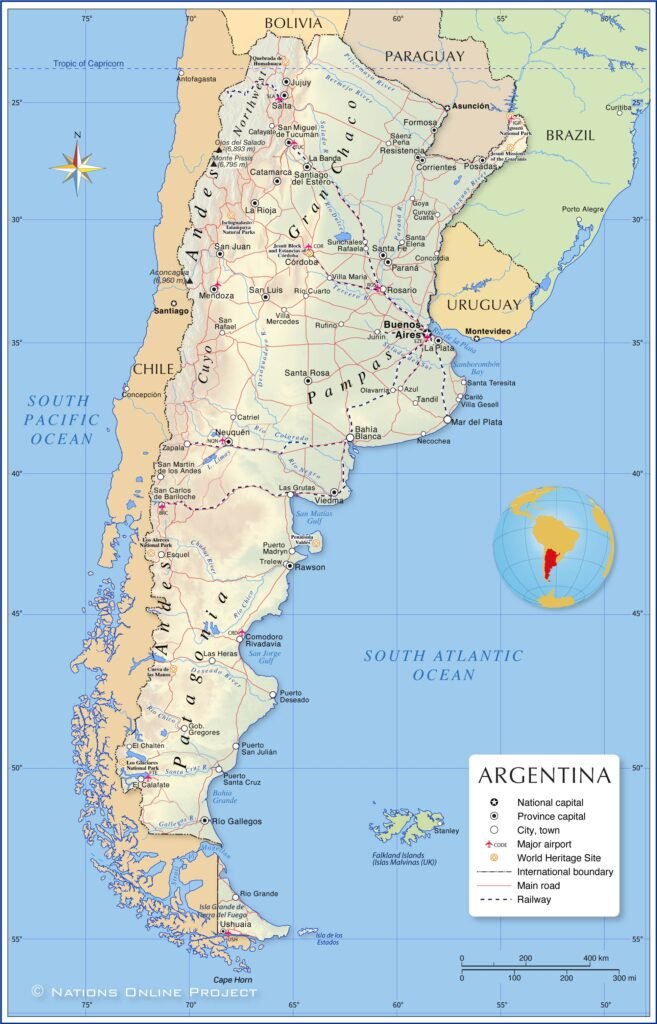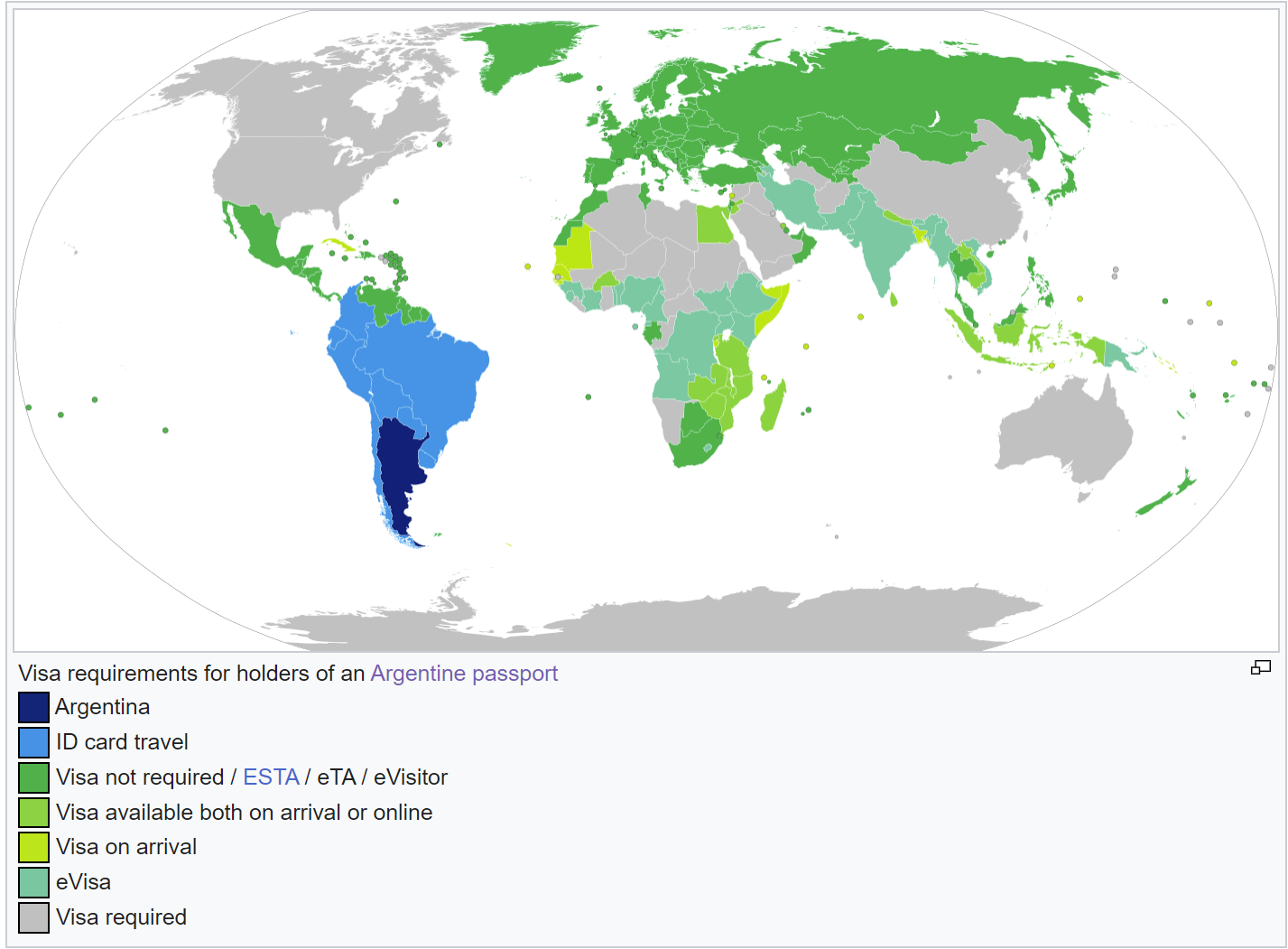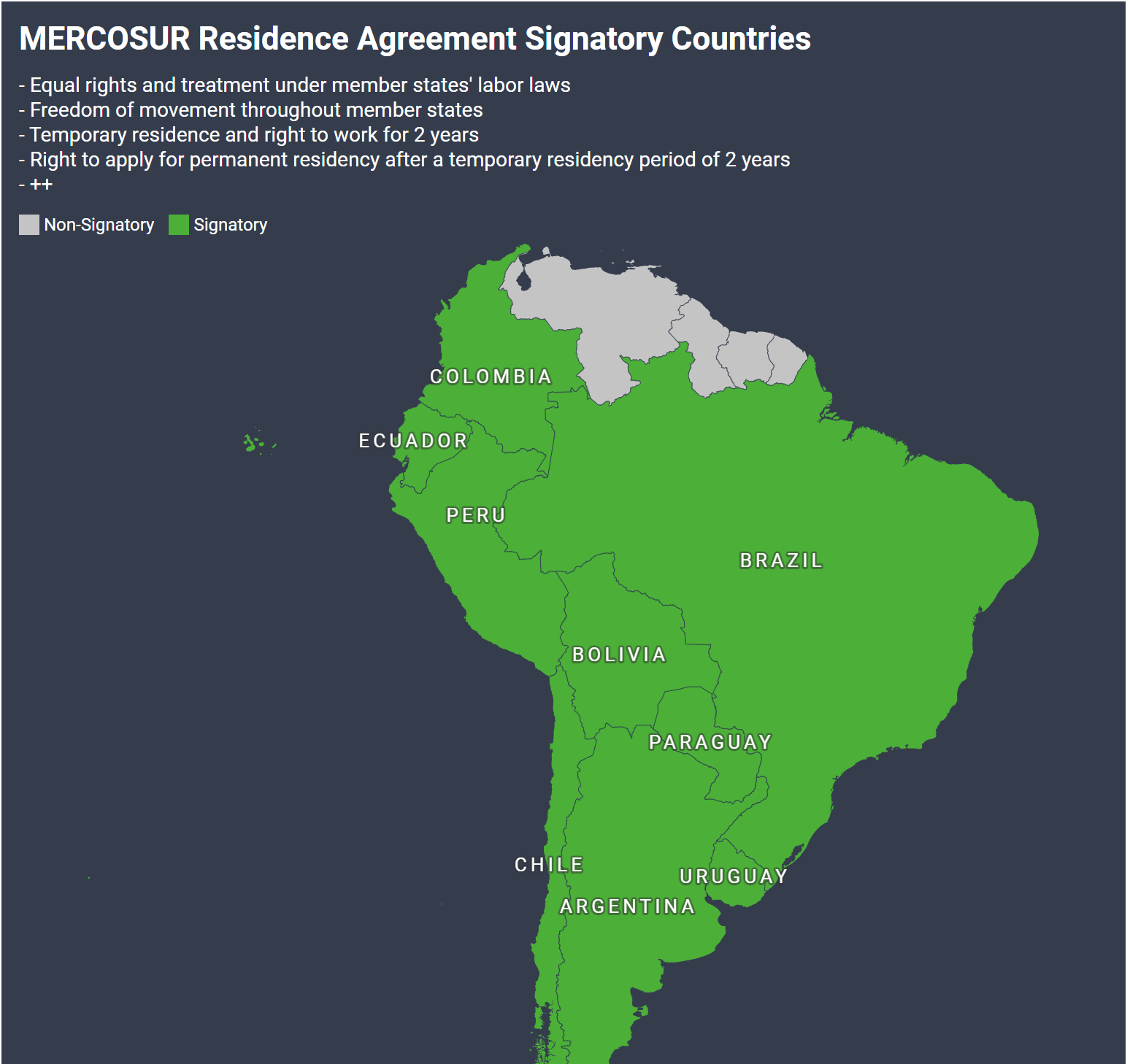Home > South America > Argentina > A Comprehensive Guide To Long-Term Residency In Argentina
A Comprehensive Guide to Long-term Residency in Argentina
Capital: Buenos Aires
Population: 47,327,407 (2022, 31st)
Ethic Group: European (mostly Spanish and Italian descent) and mestizo (mixed European and Amerindian ancestry) 97.2%, Amerindian 2.4%, African 0.4%
Area: 2,780,400 km2 (8th)
Offical Language: Spainsh
Currency: Argentine peso (as of May 14, 2024, 1 ARS = 0.0011USD)
GDP per Captial: $26,390 (2024 estimated, 66th)

Country Profile:
Argentina is the eighth largest country in the world and the second largest in South America, with a land area second only to Brazil in the Latin American region.
Culturally, it is heavily influenced by Europe: tango is Argentina’s national dance, Maradona and Messi are national icons, and Argentine literature, music, and art are renowned throughout Latin America and the world.
Economically, Argentina is the third-largest economy in Latin America, rich in resources, and primarily agricultural. However, its economic development has been repeatedly affected by inflation and debt crises throughout its history.
Visa And Immigration System:
Immigration System:
If a foreigner wants to reside in Argentina long-term, the first thing they need to do is apply for a suitable long-term residence permit.
An Argentine long-term residence permit is generally valid for one year and can be renewed under the same conditions for up to three years.
These long-term residence permits do not have any local residency restrictions, meaning you can maintain the visa without being in Argentina. However, under this circumstance, after holding the residence permit for three years, you must leave the country, as Argentina does not offer further renewal options.
If you want to reside in Argentina long-term, you must apply for a final status within these three years: Foreigners who have resided in Argentina continuously for two years, spending at least half of each year in the country, are eligible to apply for citizenship; Foreigners who have resided in Argentina continuously for three years, spending at least half of each year in the country, are eligible to apply for permanent residency.
Naturalization requires a shorter legal residency period than permanent residency, which is a unique feature of the Argentine immigration system.
Types of Long Term Residence Permit:
The most common long-term residence permits in Argentina include the following:
1. Student Visa: Provided to students studying locally, including full-time, part-time, scholarship holders, and students under 18 years old in various categories.
2. Work Visa: Provided to foreigners working locally. The labor contract must be reviewed by the local regulatory authority, AFIP.
3. Medical Visa: Provided to patients seeking medical care in Argentina. Applicants must provide a medical history issued by an Argentine healthcare institution.
4. Retirement Visa: Provided to overseas retirees. Applicants must have a stable pension income five times the local minimum wage, which amounts to a monthly pension income of 900,000 Argentine pesos, approximately 970 USD.
5. Rentista Visa: Provided to financially independent individuals. It requires an income from outside Argentina five times the local minimum wage. In practice, you need a stable monthly income of over 2,000 USD and proof of bank savings of at least 24,000 USD.
6. Investment Visa: Provided to investors. The required investment amount is not less than 1.5 million ARS, approximately 1,600 USD.
With changes in exchange rates and the economy, the old model of the Argentine investment visa has become increasingly outdated. The Argentine government is planning a comprehensive reform of the investment visa policy. However, the old application channels for the investment visa are still open as of now.
7. Digital Nomad Visa: Provided to remote workers, with no specific financial requirements. In practice, it requires a monthly income of 2,500 USD. This is a non-immigrant visa, allowing you to stay in Argentina for a maximum of one year, and it cannot be converted to permanent residence or citizenship.
Additionally, the Argentina Digital Nomad Visa is currently only available to residents of countries and regions that can enter Argentina visa-free.
Dependents:
For most Argentine residence visas, the primary applicant’s spouse and children under 25 can accompany them as secondary applicants.
Passport Power:
Argentina acknowledge dual citizenship, the Argentine passport is ranked 17th globally and allows passport holders visa-free or visa-on-arrival access to 174 countries and regions across the world (May 14, 2024).

Argentina is part of the Southern Common Market(MERCOSUR).As shown in the figure below, citizens of the member countries of this agreement can freely work and live in any other member country. After two years, if one can provide proof of financial means to support oneself and family, they can directly obtain a permanent residence visa in the country of residence. Having Argentinaian citizenship is very convenient for living in South America.

Useful Link:
Immigrate To Argentina:https://www.argentina.gob.ar/interior/migraciones
Apply For Argentina Digital Nomad Visa:https://www.argentina.gob.ar/servicio/tramitacion-de-ingreso-electronica-nomadas-digitales
Home > South America > Argentina > A Comprehensive Guide To Long-Term Residency In Argentina
Your point of view caught my eye and was very interesting. Thanks. I have a question for you.
Hi, What would you like to know?